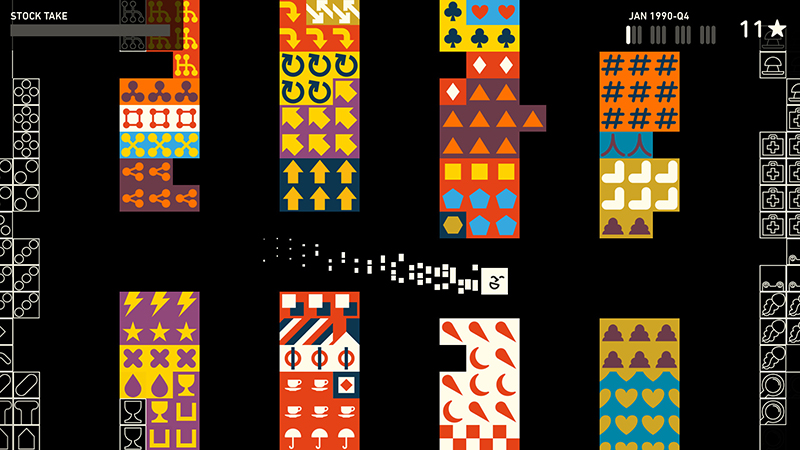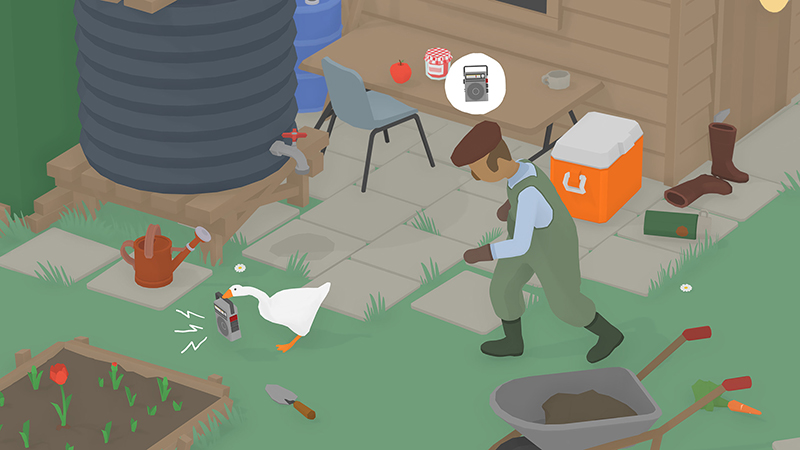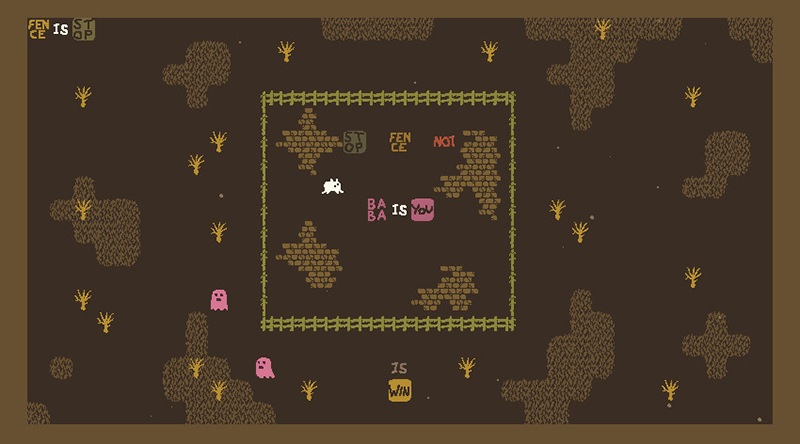Best Digital Puzzle Games of 2019
The best go beyond challenging to engage players on a number of levels: through distinct but readable design, evolving mechanics or difficulty, and repetitive but soothing soundtracks.
A good puzzle game is one that is challenging without being frustrating. The best go beyond challenging to engage players on a number of levels: through their distinct but readable design, evolving mechanics or difficulty, and repetitive but soothing soundtracks.
Below are three of the best puzzle games of the year, each of which offers a unique but equally captivating experience. The first features an ever-joyful warehouse worker sorting beautifully designed icons, the second encourages players to honk loudly and otherwise wreak havoc on the lives of people in a quiet English town, and the last is a game involving logic, language, and abstract thought that nearly defies explanation.
Although each title is appropriate for all ages, younger players will most likely enjoy the colors and patterns of Wilmot’s Warehouse, tweens will gravitate towards the slapstick hijinks of Untitled Goose Game, and older players will most appreciate the cerebral puzzling of Baba Is You.

http://www.wilmotswarehouse.com/
Wilmot’s Warehouse (Hollow Ponds/Richard Hogg, $14.99; PC, Mac, and Nintendo Switch; Gr 4 Up) is a charming puzzle game built around organizing a warehouse. It was created by Richard Hogg and Ricky Haggett, who also worked together on the whimsical 2014 title Hohokum.
Players control Wilmot, a square box with a smiling cartoon face, as they try to organize products, represented by icon tiles, however they see fit. As the game progresses, more and more new products are added, numbering 200 in total by the end. The game rewards completing tasks quickly with stars that can be used to upgrade Wilmot’s abilities, such as being able to dash or rotate blocks.
The games cycles through three phases: delivery, service, and stock take. During delivery, Wilmot must sort all incoming products and place them throughout the warehouse while being timed. The service phase consists of co-workers requesting specific items to be retrieved under the pressure of a timer. Lastly, stock take is a relaxing, untimed opportunity for players to reorganize and clean up the warehouse before the next cycle.
Wilmot’s Warehouse is both an exercise in taxonomy as well as a simple memory game. Students playing it together will excitedly shout out directions to each other as they remember where particular tiles were placed. The game is also fundamentally about visual design and interpreting concepts represented by minimalist icons, making it perfect to share with classes studying art or design.
A subtle critique runs throughout it in the form of informational posters from Wilmot’s manager, such as reminding the two-dimensional character to “always lift with your legs, not with your back”. However, this never overwhelms the engaging, Tetris-like gameplay. A trailer is available. VERDICT A cheerful, visually appealing puzzle game about organization, memory, and manual labor.

Featuring a somewhat stealthy and incredibly mischievous goose, Untitled Goose Game ($14.99; PC, Mac, Nintendo Switch; Gr 6 Up) offers a physics-based challenge. It's the second release by Melbourne-based studio House House, following the 2016 Push Me Pull You, which mixed wrestling with rubbery physics to comedic effect.
Players control a goose who can grasp objects in its beak, honk to startle nearby humans, flap its wings, and bend its neck low to fit into tight spaces or pick up small objects on the ground. Characters the creature encounters in the game (such as a gardener or a shopkeeper) reveal what they are currently thinking through thought bubbles filled with the images of the objects that populate the level.
Although the game makes reference to well-known stealth titles like the Metal Gear Solid series, students will delight in the chaos caused by the goose as well as the growing frustration of the English townspeople they encounter. The point of the game is less to escape notice and more a gleeful celebration of well-laid plans going awry.
Dan Golding’s dynamic soundtrack excerpts six of French composer Claude Debussy’s Preludes, which further reinforces the humorous tone and makes the play reminiscent of Charlie Chaplin’s silent comedies. When the goose is first spotted, the music will suddenly swell and then (shortly after) fade as the dramatic moment passes.
Educators can use the game to discuss elements of comedy with a class or even to introduce Untitled Goose Game as an example of a work that almost immediately became synonymous with the many memes it inspired. Ian Bogost’s recent Atlantic article could be an excellent starting point for exploring the latter. VERDICT Humorous, lighthearted games, and memes appropriate for classroom use can be fairly rare to come by; this title offers both. It will resonate with students who have encountered it through popular streamers or Internet memes and can also be used to examine the mechanics of silent comedy.

Baba Is You ($14.99; Hempuli; PC and Nintendo Switch; Gr 8 Up) is a refreshingly original take on a puzzle game. Play consists of pushing word blocks around to create or dismantle statements, which affect the related objects, in order to solve each screen.
The first few levels keep things relatively simple. Screens will contain the rules such as “Baba Is You” and “Flag Is Win”, meaning that players can control the rabbit-like character and touch the flag to complete the puzzle, respectively.
However, things quickly become more complex. For instance, pushing away one of the words from “Wall Is Stop” will suddenly allow players to pass through walls. While forming the statement “Rock Is Baba” will cause players to assume control over all of the rocks on the screen and move them around in order to solve the puzzle.
The game was initially prototyped by Finnish designer Arvi Teikari (who goes by Hempuli) for the 2017 Nordic Game Jam during which participants had 48 hours to make a game using the theme “Not There.” It started with Teikari imagining a block of ice safely sitting next to a pool of lava and the single sentence “Ice Is Not Melt.” The way in which the designer expanded this single idea to more than 200 different levels is an excellent example of iteration for educators.
Teikari plans to release a level editor in the near future, which will allow students to step into the role of game designers themselves. VERDICT This creative, mind-bending puzzle game challenges students to think outside of the box and collaborate to find solutions.
Eds. note: See also Knowlton's "Finding Empathy Through Games," "A Universe of Stories," and "The Art Games of Jenova Chen."
Thomas Knowlton is school outreach librarian for MyLibraryNYC at the New York Public Library, and the creator of NYPLarcade @NYPLarchade. Follow him @thomasknowlton.
RELATED
The job outlook in 2030: Librarians will be in demand
The job outlook in 2030: Librarians will be in demand
ALREADY A SUBSCRIBER? LOG IN
We are currently offering this content for free. Sign up now to activate your personal profile, where you can save articles for future viewing






Add Comment :-
Be the first reader to comment.
Comment Policy:
Comment should not be empty !!!